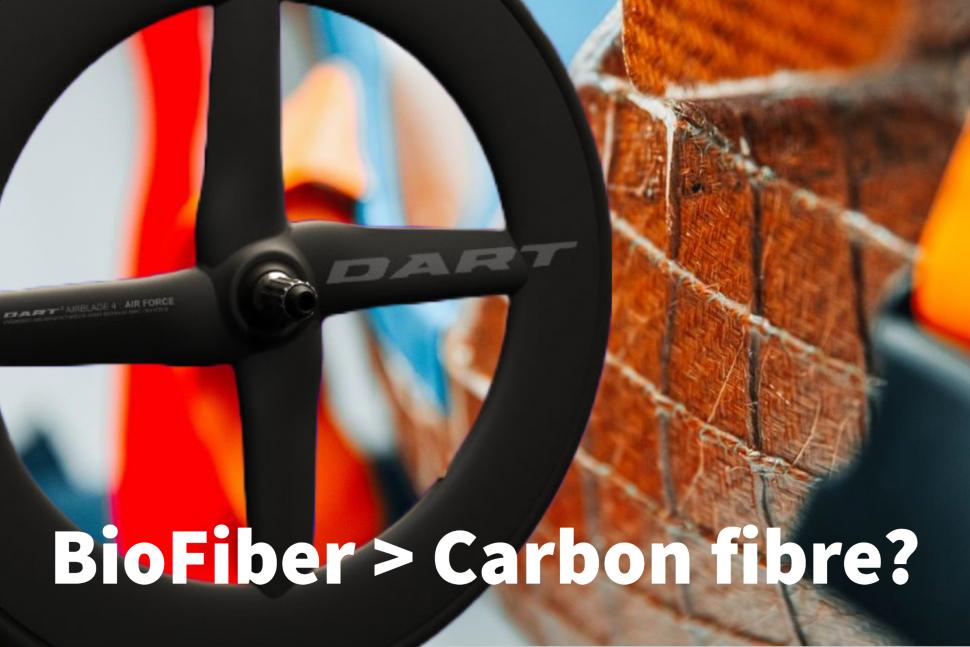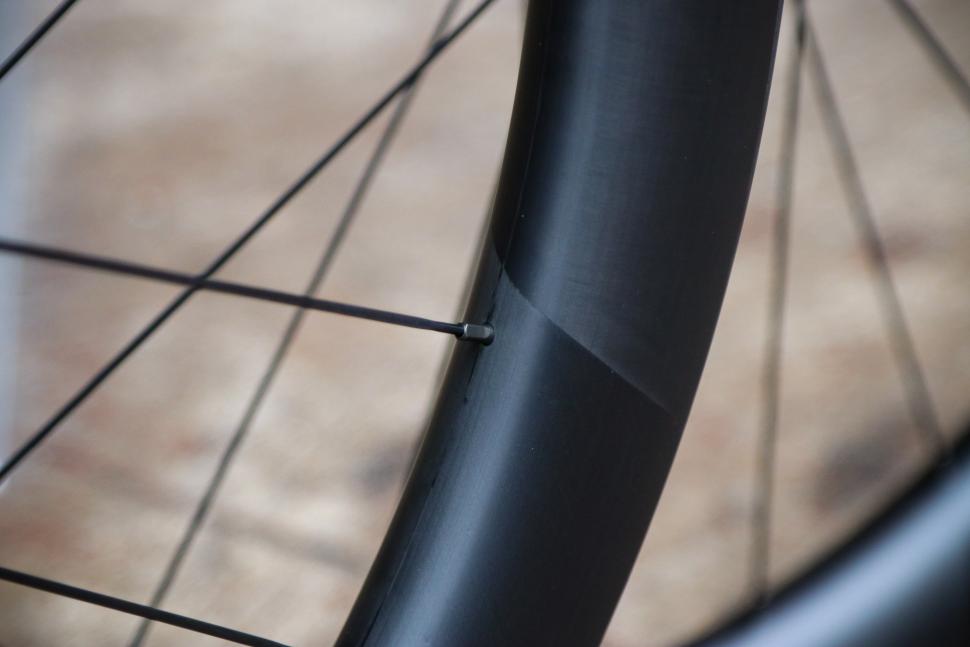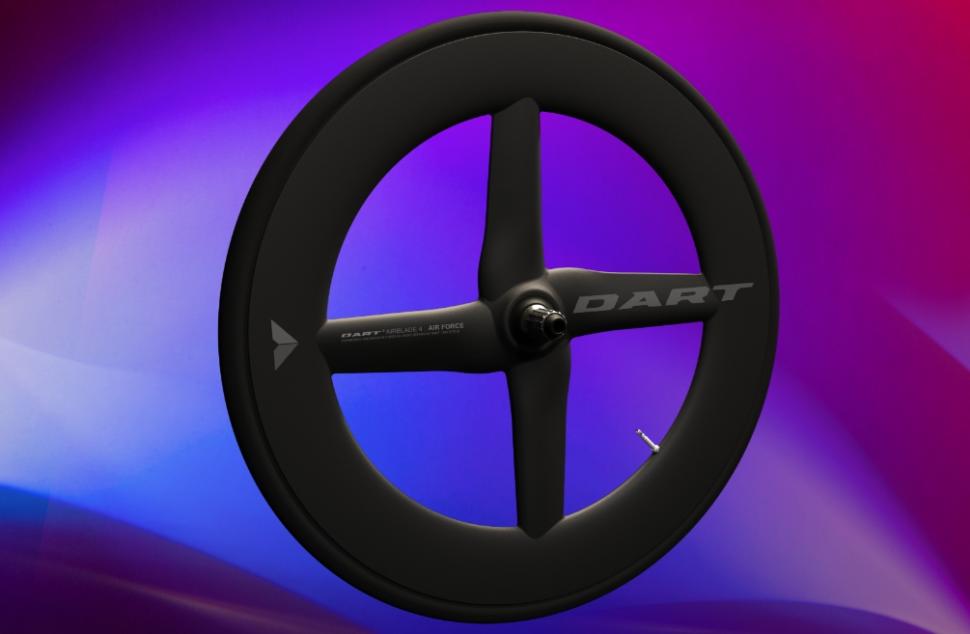- News
- Reviews
- Bikes
- Accessories
- Accessories - misc
- Computer mounts
- Bags
- Bar ends
- Bike bags & cases
- Bottle cages
- Bottles
- Cameras
- Car racks
- Child seats
- Computers
- Glasses
- GPS units
- Helmets
- Lights - front
- Lights - rear
- Lights - sets
- Locks
- Mirrors
- Mudguards
- Racks
- Pumps & CO2 inflators
- Puncture kits
- Reflectives
- Smart watches
- Stands and racks
- Trailers
- Clothing
- Components
- Bar tape & grips
- Bottom brackets
- Brake & gear cables
- Brake & STI levers
- Brake pads & spares
- Brakes
- Cassettes & freewheels
- Chains
- Chainsets & chainrings
- Derailleurs - front
- Derailleurs - rear
- Forks
- Gear levers & shifters
- Groupsets
- Handlebars & extensions
- Headsets
- Hubs
- Inner tubes
- Pedals
- Quick releases & skewers
- Saddles
- Seatposts
- Stems
- Wheels
- Tyres
- Health, fitness and nutrition
- Tools and workshop
- Miscellaneous
- Cross country mountain bikes
- Tubeless valves
- Buyers Guides
- Features
- Forum
- Recommends
- Podcast
feature
 2022 Dart Biofiber composite wheels hero
2022 Dart Biofiber composite wheels heroThe future of composites? New BioFiber bike wheels with "far lower CO2 footprint" are here
Just about every new high-end bike wheelset to hit the market these days is made of carbon fibre, with the wonder material now being used not only in the rims, but for hubs and spokes as well. These new wheels from Dart, however, rely on a completely different, all-natural, composite known as BioFiber, promising environmental benefits and "F1 grade" performance. Is this the future of composites in the bike industry?
Carbon fibre has plenty of envious properties, from its high stiffness-to-weight ratio to the fact that it can be cured into obscure and complex wind-cheating shapes. It's little surprise then that for the last few decades nearly all of the best road bike wheels have been made of the stuff.
That is up until now and the release of the Dart (Dynamic Advanced Research & Technology) four-spoke 'BioFiber' composite wheels. These new kids on the block claim to be "ideal for speed freaks seeking to lower their carbon footprint through the use of innovation."
What is BioFiber?
> What is the carbon footprint of your bike?
How is this possible? Well, Dart says it has used what it calls BioFiber, an all-natural composite and the latest high-end technology as used by McLaren Racing in F1 (shown on the right below). Diving a bit deeper it would appear that it's flax fibre being used, although this isn't stated on the company website.
> The best bikes of the F1 grid: take a look at what the fastest drivers on earth choose to ride
"Gerard LeCain, Cofounder of Dart Advanced, explains: "Flax fibre is the basis for the BioFiber wheels, but DART doesn’t use one particular product (although all are top-end F1/Aerospace sourced materials).
"DART wheels have been designed to use multifibre technology – one single company doesn’t supply all of these fibre technologies to us. Therefore, it takes three suppliers and five source products to create the materials for the composite part of our BioFiber wheels.
"That’s part of the reason why we name them our own product (BioFiber) – because our suppliers do not provide to us a finished product. It goes from one company to another for further processing before it comes to us for layup."
All of that happens right here in the UK (see we do still make things here!) and DART uses its own moulds, not open moulds. The 'Airblade 4' wheel system is designed to comply with ISO 5775-2 and ISO 4210-7 standards, meaning that it can be used for competing in triathlon and UCI events that don't involve a mass start. For UCI mass start events, wheels must have at least 12 spokes.
The wheels
Naturally, there are quite a few wheels in the range to suit different conditions and riders. Dart says that although the designs look similar, each wheelset has a use-specific BioFiber layup and monocoque.
The Airforce range (available in 60mm and 80mm depths) is said to be optimised for TTs and triathlons, the Strikeforce wheels for road use and the Groundforce is for all-road, dust trail and cobbles.
All of the wheels come with a 10-year manufacturing defect warranty. Dart clearly has faith in the strength of its BioFiber rims as the original owner is entitled to 65% off RRP if they get damaged within the first three years.
The Airblade 4 series wheelsets are tubeless straight-side (TSS), hookless wheelsets and have a claimed weight of 1,680g (in the 60mm Airforce version with machined billet hubs). Dart has also collaborated with CeramicSpeed, and each wheelset features no less than six custom-sized handmade bearings for 'pro-level' performance.
Internal and external widths vary on purpose from 21mm internal and 25mm external for the TT version, up to 25mm internal and 30mm external for gravel. The wheels are currently available with Shimano freehubs, with plans to stock Sram XDR soon.
The hubs are presently 7075-T6 and 6061-T6 machined from solid billet, and made specifically shy of aerospace standards with an intended tolerance of between +/-0.02mm or +/-0.5mm. There are future plans for a 3D-printed titanium option.
Environmental impact
So, is all this actually any better for the environment than using carbon fibre? Dart says: "There is no carbon fibre in our BioFiber wheels. Our composites feature high-performance engineered variants of differing modulus and different variants of fibre.
"We use CO2-neutral BioFiber for dampening and structural reinforcement, and our entire advanced monocoques have a far lower CO2 footprint than wheels made from carbon fibre, and without CF dust pollutants being dispersed into the atmosphere.
"Our all-natural fibres reduce our carbon footprint dramatically because they absorb CO2 in their natural development stages before they are engineered into high-performance materials and wheels."
As with many new technologies, it comes at a cost. The Dart wheels start (yep, start) at £3,499.99 per pair, which makes them a similar price to the most expensive carbon wheelsets on the market such as the Zipp 454 NSWs.
What's next?
Dart says it is currently working on a range of BioFiber rims that can be built up on ‘off the peg’ hubsets as well as its own, meaning more people could benefit from the environmental benefits of BioFiber as they will then be suitable for mass start or UCI-regulated races. Dart anticipates these wheels will be its first mainstream seller, will retail for around £2,000 and weigh ~1,450g per pair.
LeCain adds: "Basically, the whole concept of DART is to adopt a McLaren-like level offering and concentrate on products that encapsulate sustainability virtues – natural fibres, aluminium and titanium all offer that in droves.
"Additionally, DART products will focus on being beautifully designed and engineered to top-level standards using the absolute highest quality and latest technology materials and will continue to be derived from the F1/Motorsport, and aerospace sectors."
Dart wheels are available to pre-order now with the first wheelsets expected to ship at the start of 2023.
As the world becomes more environmentally conscious and consumers demand lower-carbon products, it seems very likely that we'll see more brands switching from carbon fibre to natural fibre alternatives.
Will a component's environmental impact be influencing your next purchase? Let us know in the comments section below...
Jamie has been riding bikes since a tender age but really caught the bug for racing and reviewing whilst studying towards a master's in Mechanical engineering at Swansea University. Having graduated, he decided he really quite liked working with bikes and is now a full-time addition to the road.cc team. When not writing about tech news or working on the Youtube channel, you can still find him racing local crits trying to cling on to his cat 2 licence...and missing every break going...
Latest Comments
- BigSigh 1 hour 6 min ago
I am absolutely certain that it's not fair for trans-identifying males who went through male puberty to compete in female sports... and that should...
- thax1 1 hour 9 min ago
I was just excited to learn that Grundig were still a going concern, let alone making stuff for bikes now! What's next, Blaupunkt power meters?!
- chrisonabike 2 hours 20 min ago
Nothing to do with cycling, and currently unclear as to what exactly happened. But a child is dead, a tram line isn't running services and ...
- Destroyer666 1 hour 34 min ago
Sidelining the point here a little bit, but I was just looking at a Rapha video about Lachlan Morton's latest incredible venture of riding 648km in...
- wtjs 5 hours 12 min ago
Or, you can just look at them - it's pretty obvious when they're not going to work with a new chain. Then you can try them with old lengthened...
- NeilC575 5 hours 15 min ago
I bought 5 screw in storage hooks from local d.i.y store for £10. Does the same job 🤷♂️
- Bungle_52 8 hours 59 min ago
Well it looks like they've got a page now. It says they'll accept video evidence but I haven't been through the whole process. Looks very similar...
- eburtthebike 9 hours 8 min ago
Sorry, but the BBC is definitely tilting towards cycling after the Panorama debacle....
- mdavidford 9 hours 14 min ago
Unlikely. Not once he hears that it'll 'help Gore'.







Add new comment
7 comments
Firstly, it is great to see developments in this direction, anything we can do to reduce the end of life impact of the crap we produce has got to be a good thing. But I do get the feeling there is a bit of smoke and mirrors going on. Drill down from Dart, through McLaren, and there is lots of talk about replacing carbon fibres with natural fibres, but no mention of what resin type is used, in what application. They do mention that flax fibres have been used for many years in Japan where they are reinforced with resin from the Urushi tree, but no mention of this getting anywhere near an F1 car! Fibre suppliers (Bcomp who supply their "amplitex" material to McLaren, and Easy Composites in the UK) simply say that any conventional resin system can be used with flax fibre, including prepreg, vacuum uptake, thermoplastic, thermosetting, epoxy, polyester, vinylester etc. They also state that weight for weight, fibre glass is 4 times stronger than flax fibre, and carbon fibre 5 times stronger so comparisons need to be carefully inspected. In this vein, despite the hype from Mclaren about using flax fibre on their F1 cars, they only make their drivers seats from flax fibre, while Porsche and BMW make largely cosmetic bodywork from natural fibre to cover a racing chassis made from other materials. Still worth doing, but if flax were really a substitute for carbon, those vulnerable F1 front wings would be made from flax!
Chris King has been mentioned as having "solved" recycling of carbon fibre, however here is what the manufacturers of his "fusion fibre" technology say about recycling: "Recycling FusionFiber is as simple as shredding it into short fibers. These fibers can be directly repurposed into new compression-molded parts for other commercial applications with zero waste." This is not unique, there are other composite "recycling" techniques involving cutting fibres into shorter fibres, but you never get your original fibre back, and each cycle results in a further degraded base material.
Which raises the question of what we actually mean by recyclable. Do a google and you will find any number of companies offering a carbon fibre recycling service, the questions are whether it can be recycled in a cost effective manner, and which can be repeatedly recycled. Rather like all that packaging we bring home from the supermarket where the label says it can be recycled, but to do so somebody needs to separate all the different materials (cardboard, plastic, foil..) which the manufacturer glued together!
How come they talk about the environmental side without mentioning, what I imagine, is the key point that carbon fibre is a plastic and doesn't break down. Those rim brake carbon wheels you bought a few years back that are now out of fashion; they'll still be kicking around in landfill after you, your kids and your kids kids have all passed on. Does Biofibre use natural resin as well as natural fibre? Does it naturally break down over time like metal does? For all it's pretence at being environmental cycling should be ashamed at its over use of black plastic.
That's unambiguous; they claim the composite, not just the fibre within, is "all-natural".
However, like you, I have my doubts, and it's too bad the writer of the piece didn't press the question.
Maybe I'm wrong but I thought half the problem with CF as a material was not the carbon per se but the fact that it's inseparable from the resin. Thus unless these wheels have solved that problem they are still not particularly recyclable?
I think what they are claiming is less CO2 is produced in making the wheels, as they don't use carbon fibre. Aside from the chemical and physical process to create the initial fibres, there is a heating phase to carbonise them which is energy intensive. These people are using fibres derived from plants by the sound of it, enabling them to claim that at least (a small) part of the product's lifecycle is carbon negative. I'm not sure whether or not the final material in the wheels would be any more or less recyclable than carbon fibre.
Exactly. The fact that they labour the 'environmental' point about the production of the raw fibre, and don't make any reference to recyclability of the final composite tells me that this product doesn't really solve one of the biggest problems with composites.
That problem has been solved elsewhere, see Chris King's new gravel wheels, if both processes could be combined we'd have almost entirely solved the issue.